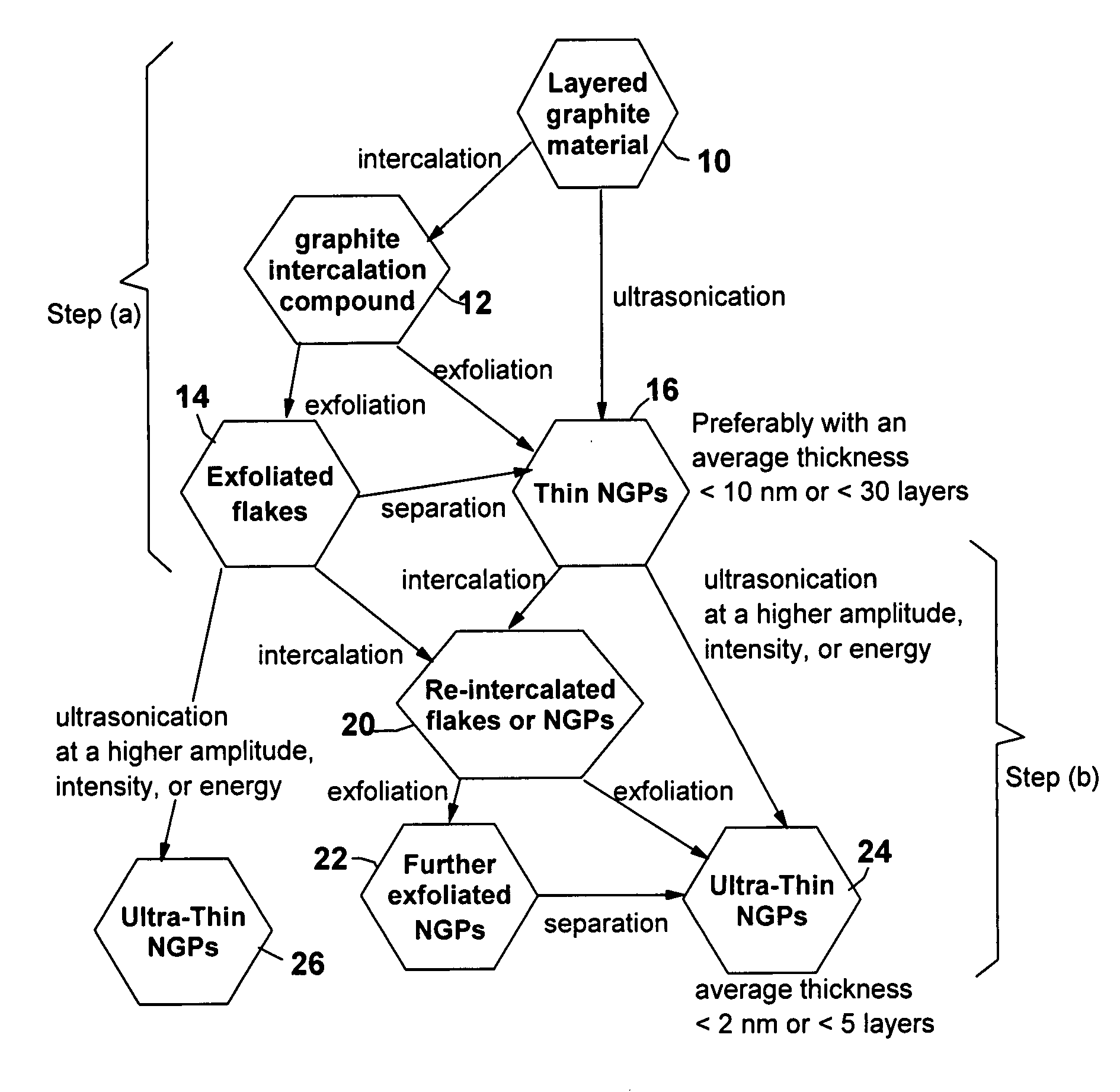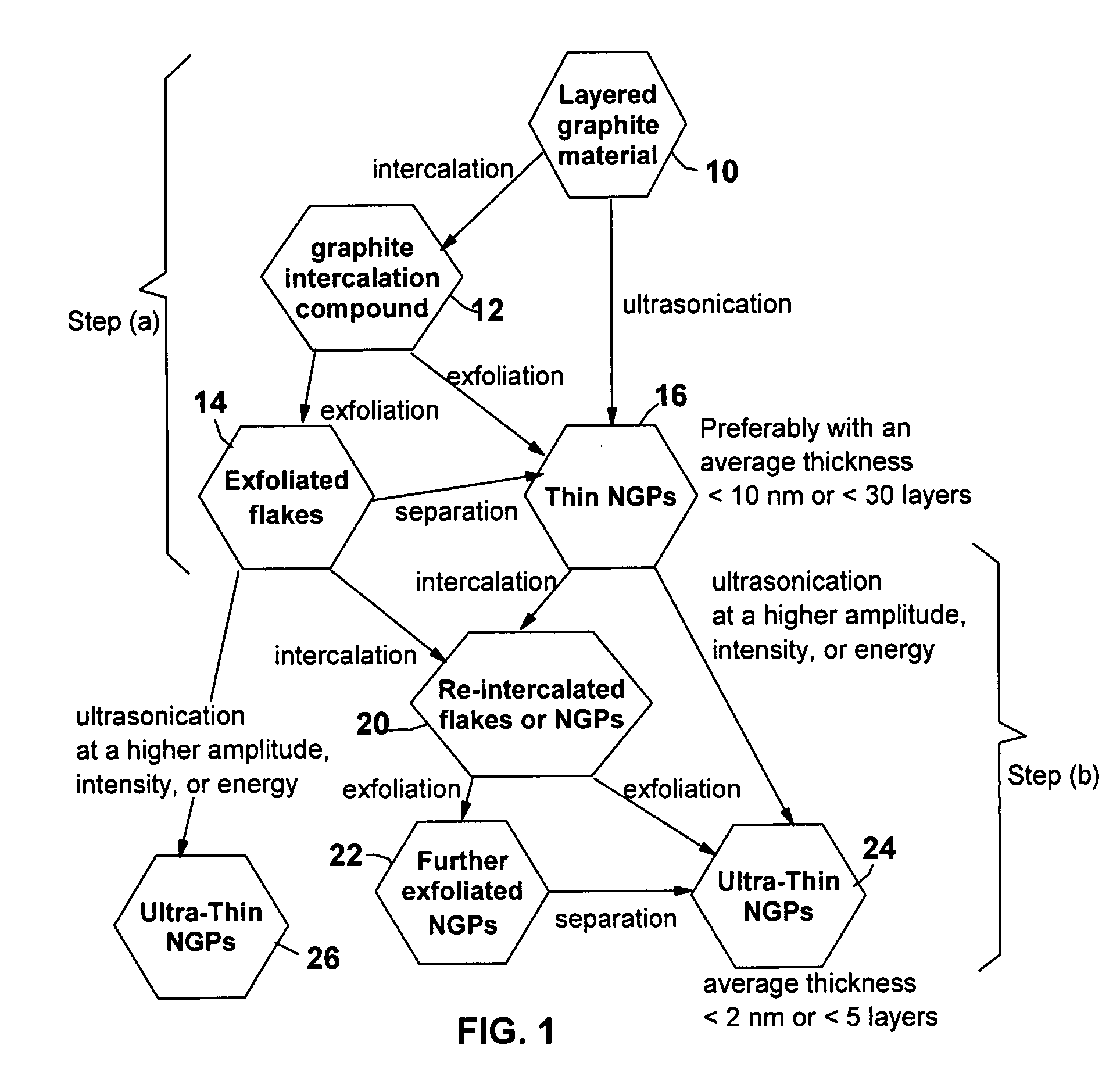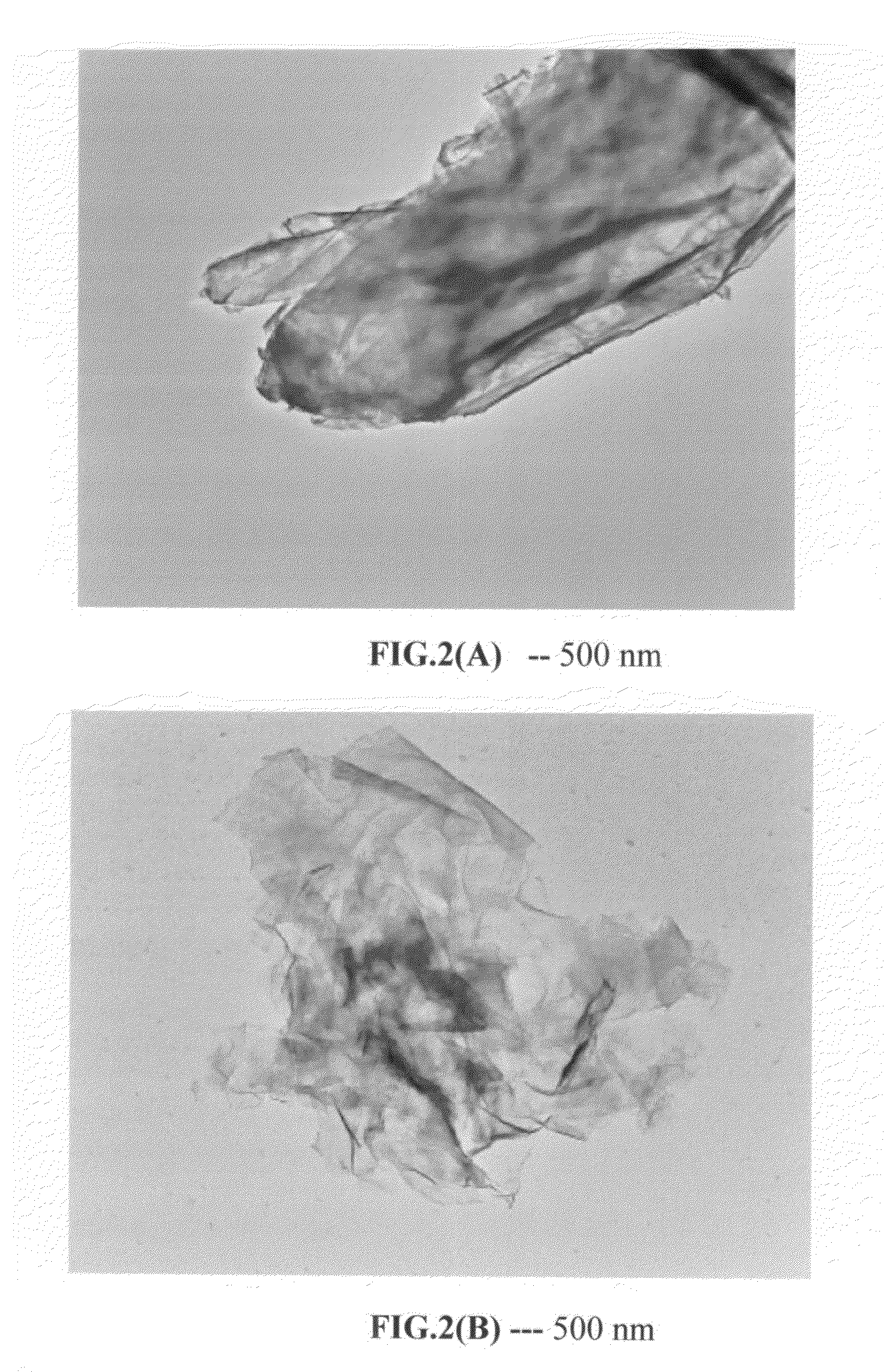Method for producing ultra-thin nano-scaled graphene platelets
a graphene and nano-scale technology, applied in the field of ultra-thin nano-scaled graphene platelets, can solve the problem of producing thin ngps with an average thickness greater than 2 nm, and achieve the effect of reducing the size of the platelets
- Summary
- Abstract
- Description
- Claims
- Application Information
AI Technical Summary
Benefits of technology
Problems solved by technology
Method used
Image
Examples
example 1
Nano-Scaled Graphene Platelets (NGPs) from Highly Oriented Pyrolytic Graphite (HOPG) Flakes via Repeated Halogen Intercalation and Exfoliation Steps
[0065]One hundred grams of HOPG flakes, ground to approximately 20 μm or less in sizes, and a proper amount of bromine liquid were sealed in a two-chamber quartz tube with the HOPG chamber controlled at 25° C. and bromine at 20° C. for 36 hours to obtain a halogen-intercalated graphite compound.
[0066]Subsequently, approximately ⅔ of the intercalated compound was transferred to a furnace pre-set at a temperature of 200° C. for 30 seconds. The compound was found to induce extremely rapid and high expansions of graphite crystallites with an expansion ratio of greater than 200. The thickness of individual platelets ranged from two graphene sheets to approximately 40 graphene sheets (average of 22 sheets or approximately 7.5 nm) based on SEM and TEM observations.
[0067]Approximately one half of these intermediate-thickness NGPs were then seale...
example 2
Ultra-Thin NGPs from Intercalation and Exfoliation of Highly Oriented Pyrolytic Graphite (HOPG) Flakes, Followed by Direct Ultrasonication
[0068]Approximately 5 grams of the remaining half of the intermediate-thickness NGPs prepared in Example 1 were dispersed in 1,000 mL of deionized water, along with 0.1% by weight of a dispersing agent (Zonyl® FSO from DuPont), to obtain a suspension. An ultrasonic energy level of 125 W (Branson S450 Ultrasonicator) was used for exfoliation, separation, and size reduction for a period of one hour. Electron microscopic examinations of selected samples indicate that the majority of the resulting NGPs contain between single graphene sheet and seven sheets (average 3-4 sheets).
example 3
NGPs from Natural Graphite Flakes
[0069]Five grams of graphite flakes, ground to approximately 20 μm or less in sizes, were dispersed in 1,000 mL of deionized water (containing 0.1% by weight of a dispersing agent, Zonyl® FSO from DuPont) to obtain a suspension. An ultrasonic energy level of 85 W (Branson S450 Ultrasonicator) was used for exfoliation, separation, and size reduction for a period of 2 hours. The average thickness of NGPs was approximately 4.5 nm. Approximately half of these intermediate-thickness NGPs were then subjected to ultrasonication under comparable conditions, but at a higher energy level of 125 W, for one hour. The resulting ultra-thin NGPs exhibit an average thickness of approximately 1.4 nm.
PUM
| Property | Measurement | Unit |
|---|---|---|
| thickness | aaaaa | aaaaa |
| thickness | aaaaa | aaaaa |
| temperature | aaaaa | aaaaa |
Abstract
Description
Claims
Application Information
 Login to View More
Login to View More - R&D
- Intellectual Property
- Life Sciences
- Materials
- Tech Scout
- Unparalleled Data Quality
- Higher Quality Content
- 60% Fewer Hallucinations
Browse by: Latest US Patents, China's latest patents, Technical Efficacy Thesaurus, Application Domain, Technology Topic, Popular Technical Reports.
© 2025 PatSnap. All rights reserved.Legal|Privacy policy|Modern Slavery Act Transparency Statement|Sitemap|About US| Contact US: help@patsnap.com



